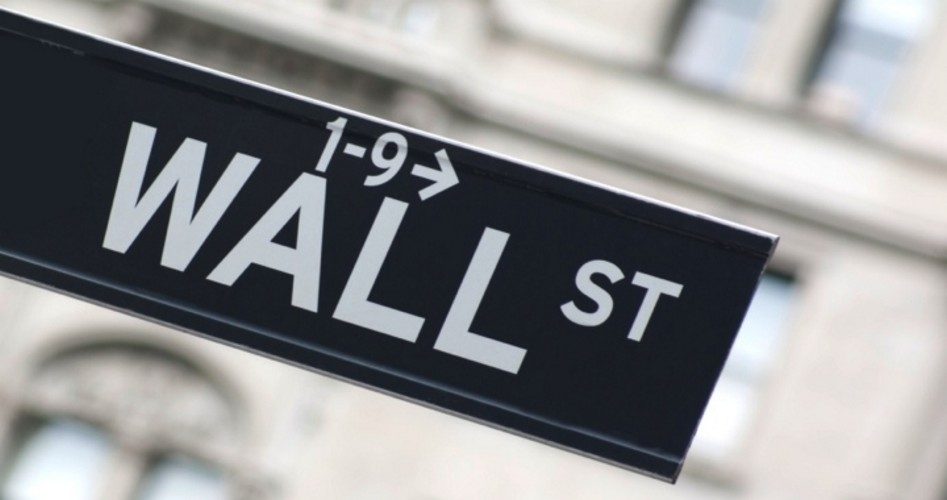
On Thursday, the last trading day of the first quarter of 2013, the Standard and Poor’s index of 500 stocks — the S&P 500 — traded at 1567, two points above where it traded in October, 2007, just before it plummeted to 676 in March, 2009. With that news, the sigh of relief on Wall Street was nearly audible. CNNMoney gushed:
Finally! The S&P 500 topped its all-time closing high in morning trading Thursday, after flirting with the milestone for weeks….
The Dow [Jones Industrial Average], which has been trading at record highs since early March, is up more than 11% and poised to book its best first quarter since 1998. The S&P 500 is up almost 10%. The Nasdaq is up 8%.
And there’s more to come, according to the staff at CNNMoney: “Valuations remain attractive for U.S. stocks … and looking at earnings projections, stocks still appear reasonably valued.”
This no doubt is a surprise to the writer at Activist Post who exactly three months ago said that this is “a false bull market. That is why we feel comfortable predicting a significant decline in the stock market in 2013 … Look for the Dow Jones to dip below the 10,000 mark [it traded Thursday at 14,564] next year.” That would be a decline of more than 30 percent.
Anthony Mirhaydari, writing for MSN Money, said “there are still serious problems with the real economy” and proceeded to outline them:
The job gap: Despite adding 236,000 jobs in February, there are still 6 million fewer jobs today than there were in November, 2007.
The wage gap: Real spendable income is still down 6.2% from the pre-recession high.
The wealth gap: Although household net worth has rebounded strongly since the start of the Great Recession, a lot of it has to do with the drop in household liabilities mainly due to mortgage defaults.
Consumer spending slack: Real retail sales per capita is down more than 6 percent since the start of the recession, and a lot of those sales are coming out of savings, not out of higher wages. Wrote Mirhaydari: “By all indications, [consumers] will soon have no choice but to pull back even more.”
The debt overhang: Despite paying down credit card and automobile financing debt, the average household still owes more than 100% of its disposable income in short term debt.
He remains just as bearish as the Activist Post: “Risks to the economy are high and the momentum is to the downside, despite what’s happening in the stock market.”
With the release on Tuesday of its monthly Consumer Confidence Index, the Conference Board added substantially to the bearish case, further substantiating the case for a correction in the stock market that seems to rise without reason. According to the Board, the index — based on 5,000 phone calls to households across the country — dropped from 68 last month to 59.7. The “present situation” index decreased as well, from 61.4 to 57.9, while the “expectations” index also fell, from 72.4 to 60.9. The baseline of 100 was established back in 1985, and it’s been more than five years since the index has been that high.
Said Lynn Franco, the director of economic indicators at the Board:
Consumer Confidence fell sharply in March, following February’s uptick. This month’s retreat was driven primarily by a sharp decline in expectations, although consumers were also more pessimistic in their assessment of current conditions.
The loss of confidence, particularly expectations, mirrors the losses experienced this past December and January. The recent sequester has created uncertainty regarding the economic outlook and as a result, consumers are less confident.
The University of Michigan’s Consumer Sentiment Index, which is based on 500 phone calls, also reflects that consumer malaise: Its baseline year is 1964 and the last time that index saw 100 was back in January, 2003. Its February number was 77.6 while the preliminary March number came in at 71.8. Its final March report is due out on Friday.
Perhaps the most telling index of all, however, is the Baltic Dry Index (BDI), which measures economic activity by sea-going bulk carriers moving commodities like coal, oil, building materials, and grain. It is highly regarded as a predictor of future economic activity as it measures global supply and demand for these essential goods. The graph of that index is revealing: At the very top of the real estate bubble in June, 2008, the BDI registered 12,000. As of March 28, the BDI is 910.
If the difference between the euphoria driving Wall Street and the gloom reflecting Main Street can be characterized as a war, the question is, which side will win? Will stocks continue to move ever higher, dragging a reluctant economy along with it? Or will the weak economy finally be reflected in the price of stocks? There’s another indicator that helps answer those questions: It’s the rule of the “regression to the mean” which Mark Hulbert deftly defines as “the tendency for things to even out over time. Performance that is well above average usually doesn’t stay there forever; it usually comes back to earth. Performance that is well below average often gets better.” At some point, the twain shall meet: A slowly improving economy will rise to meet a stock market that finally recognizes reality.
A graduate of Cornell University and a former investment advisor, Bob is a regular contributor to The New American magazine and blogs frequently at www.LightFromTheRight.com, primarily on economics and politics. He can be reached at [email protected].



